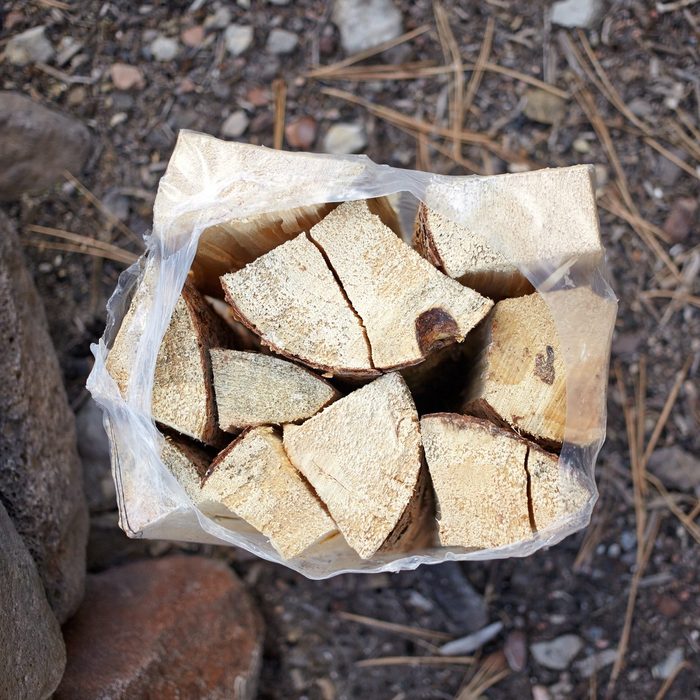Firewood Measurements: What Do They Mean?
If you’re looking for firewood in the U.S., you’ll be buying it by the cord or fraction thereof. The term originated around the 16th century and referred to the length of the cord used to bundle the wood together. It isn’t common internationally, though countries such as New Zealand and Canada do use it.
Because it originated when the Imperial measurement system was prevalent, a cord is defined by feet. Countries that adopted the metric system, including Canada, measure firewood in multiples of a stere, a unit based on meters. A stere is smaller than a cord.
A cord is a lot of firewood, and people don’t always need that much. Some of the smaller units sellers use for quantifying firewood are face cord, rick, pallet and bundle.
The Amount of Firewood in a Cord
Firewood is measured by volume, not weight. That simplifies matters because different wood species weigh more than others, and a given species weighs more when it’s wet than dry. For an accurate volume measurement, the wood should be neatly stacked with as little space between logs as possible.
A cord of firewood is a rectangular pile four feet high, eight feet long and four feet deep, or 128 cubic feet. This is the standard Imperial measurement unit. To haul a cord of firewood in a pickup truck, you’ll probably need more than one trip, depending on the weight of the wood.
Four-foot logs are too long for most fireplaces, so it’s common to cut them shorter. If you cut them in half or in thirds and make four-foot by eight-foot stacks one behind the other, you’ll still have a full cord of firewood.
Smaller Units: Face Cord and Rick
If you stand in front of a pile of firewood that measures eight feet long by four feet in high, you might be looking at a full cord, but you might not. It depends on the lengths of the logs and how many stacks are behind the one you see. If there’s only a single stack and the logs are uniformly 16 inches long, you’re looking at a face cord. Its volume is one-third of a cord, or 42.7 cubic feet.
Like a face cord, a rick is a stack measuring four feet by eight feet. with a depth shorter than four feet. If the depth is 16 inches, the rick equals a face cord, but the lengths of logs in a rick often vary regionally and by seller. If the depth of the pile is two feet, the rick equals half a cord. But if the depth is only 12 inches (ideal for most wood stoves), it’s only a quarter cord. To add more confusion, some sellers consider a 12-inch rick to be a face cord.
Even Smaller Units: Pallet and Bundle

Even a face cord or rick is a lot of firewood. If you only use your fireplace occasionally, you might not want that much, especially if you lack storage space. Some wood suppliers sell by the pallet, which is equal to a cubic stack of 3.5 feet. The total volume of a pallet is 42.9 cubic feet, about the same as a face cord, so a half pallet might work well for you.
The most convenient way to buy firewood is by the bundle, the standard unit sold in grocery and big box stores and gas stations. Bundles suit people who have occasional fires, but they’re costly for those who burn wood every day.
The volume of store-bought bundles varies, but it’s typically about 3/4-cu.-ft. Because each bundle costs $5 to $7, you can spend as much as $670 per cord. That’s a lot more than the $200 to $400 for a full cord from a firewood supplier.
Buying Firewood in Metric Countries
The U.S. is one of only three countries that still use the Imperial measurement system, so travelers should understand metric firewood measurement units.
Metric units, such as the liter and the kilogram, take some getting used to. So does the unit for firewood, the stere. It’s a stack that measures one meter by one meter by one meter. But because it includes the spaces between the logs, it’s slightly smaller than a cubic meter. One stere equals about a quarter of a cord.
The stere isn’t a universal metric measurement unit. The Dutch measure firewood by the kuub, Germans by the kubikmeter and Finnish in motti. These units are all the same and also equal one cubic meter. But because they don’t include the spaces between the logs, they’re slightly larger than a stere.
No comments